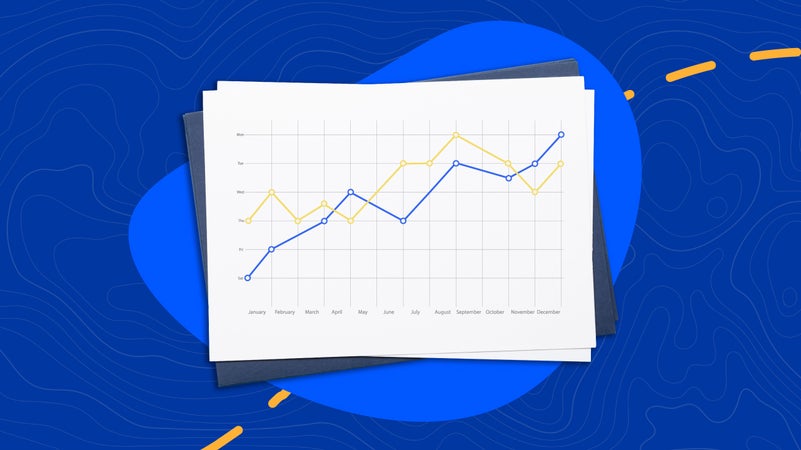How to buy an S&P 500 index fund: Key things to know

The Bankrate promise
At Bankrate we strive to help you make smarter financial decisions. While we adhere to strict , this post may contain references to products from our partners. Here's an explanation for .
Standard & Poor’s 500 index funds are among today’s most popular investments — and it’s little wonder why. The S&P 500 index on which these funds are based has returned an average of about 10 percent annually over time and represents hundreds of America’s best companies. With an S&P 500 index fund you own the market, instead of trying to beat it.
In fact, legendary investor Warren Buffett has long advised investors to buy and hold an S&P 500 index fund. So if you’re considering one for your portfolio, here’s what you’ll need to know to get started.
Index funds explained
An index fund is a type of investment fund – either a mutual fund or an ETF – that is based on an index. An index is a preset collection of stocks (or bonds), and an index fund merely mimics the composition of the index, rather than trying to pick which stocks will outperform. So an index fund is a passively managed investment, adjusting its holdings only when the underlying index changes.
An index fund is typically created around a specific theme. For example, there are indexes for companies based on their geographic location (such as the U.S.), their size (large companies, as in the S&P 500), their sector (such as semiconductors or healthcare), or whether they pay dividends. An index might also consist of only bonds, or only bonds of a certain quality and duration. The best index funds can deliver outstanding returns over time.
How to invest in an S&P 500 index fund
It’s surprisingly easy to buy an S&P 500 fund. You can set up your account to buy the index fund on autopilot, so you’ll almost never have to monitor the account, or you can enter your trades manually.
1. Find your S&P 500 index fund
It’s actually easy to find an S&P 500 index fund, even if you’re just starting to invest.
Part of the beauty of index funds is that an index fund will have exactly the same stocks and weightings as another fund based on the same index. In that sense, it would be like choosing among five McDonald’s restaurants serving exactly the same food: which one would you go with? You’d probably select the restaurant with the lowest price, and it’s usually the same with index funds.
Here are two key criteria for selecting your fund:
- Expense ratio: To determine whether a fund is inexpensive, you’ll want to look at its expense ratio. That’s the cost that the fund manager will charge you over the course of the year to manage the fund as a percentage of your investment in the fund.
- Sales load: If you’re investing in mutual funds, you’ll also want to see if the fund manager charges you a sales load, which is a fancy name for a sales commission. You’ll want to avoid this kind of expense entirely, particularly when buying an index fund. ETFs don’t charge a sales load.
S&P 500 index funds have some of the lowest expense ratios on the market. Index investing is already less expensive than almost any other kind of investing, even if you don’t select the cheapest fund. Many S&P 500 index funds charge less than 0.10 percent annually. In other words, at that rate you’ll pay only $10 annually for every $10,000 you have invested in the fund.
Some funds are even less expensive than that. Here are five of the best S&P 500 index funds, including one that’s completely free, as well as some other top index funds.
In investing, paying more doesn’t always translate into better returns. In fact, the relationship between fees and returns is often reversed. Since these funds are largely the same, your choice is not a “make or break” decision – you can expect to get the performance of the index, whatever that is, minus the expense ratio or any fees you’re paying. So costs are an important consideration here.
Select your fund and note its ticker symbol, an alphabetical code of three to five letters.
2. Go to your investing account or open a new one
After you’ve selected your index fund, you’ll want to access your investing account, whether it’s a 401(k), an IRA or a regular taxable brokerage account. These accounts give you the ability to purchase mutual funds or ETFs, and you may even be able to buy stocks and bonds later, if you choose to do so.
If you don’t have an account, you’ll need to open one, which you can do in 15 minutes or less. You’ll want one that matches the kind of investments you’re planning to make. If you’re buying a mutual fund, then try to find a broker that allows you to trade your fund without a transaction fee. If you’re buying an ETF, look for a broker that offers ETFs without commissions, a practice that has become the norm.
The best brokers offer thousands of ETFs and mutual funds without a trading fee. Here is Bankrate’s list of best brokers for beginners.
3. Determine how much you can afford to invest
You don’t have to be wealthy to begin investing, but you should have a plan. And that plan begins with figuring out how much you’re able to invest. You’ll want to add money regularly to the account and aim to hold it there for at least three to five years to allow the market enough time to rise and recover from any major downturns.
The less you’re able to invest, the more important it is to find a broker that offers you low fees, because that’s money that could otherwise go into your investments.
Once you’ve figured out how much you can invest, move that money to your brokerage account. Then set up your account to regularly transfer a desired amount each week or month from your bank. Or you can set up your 401(k) account to move money from each paycheck.
4. Buy the index fund
Once you know the S&P index fund you want to buy and how much you’re able to invest, go to your broker’s website and set up the trade.
Stick to the broker’s easy trade entry form, which often appears at the bottom of the screen. Input the fund’s ticker symbol and how many shares you’d like to buy, based on how much money you’ve put into the account.
If you’re able to move money into the brokerage account regularly, many brokers allow you to set up an investing schedule to buy an index fund on a recurring basis. This is a great option for investors who don’t want to remember to place a regular trade. You can set it and forget it.
As a result, you’ll be able to take advantage of the benefits of dollar-cost averaging, which can help you reduce risk and increase your returns.
What is the S&P 500?
While there can be almost any number of indexes, the most famous ones are based on the Dow Jones Industrial Average, the Standard & Poor’s 500 and the Nasdaq Composite.
Of these, the S&P 500 Index has come to be seen as the bellwether for the American stock market. It contains about 500 of the largest companies in the United States, and when investors talk about “beating the market,” the S&P 500 is often considered the benchmark.
In contrast, the Dow Jones Industrials contains just 30 companies, while the Nasdaq Composite measures the performance of some 3,000 companies. While the holdings of these indexes do overlap, the S&P 500 contains the widest variety of companies across industries and is the most broadly diversified of those three indexes.
Why do investors like S&P 500 index funds?
S&P 500 index funds have become incredibly popular with investors, and the reasons are simple:
- Ownership of many companies: These funds allow you to hold a stake in hundreds of stocks, even if you own just one share of the index fund.
- Diversification: This broad collection of companies means you lower your risk through diversification. The poor performance of one company won’t hurt you as much when you own many companies.
- Low cost: Index funds tend to be low cost (low expense ratios) because they’re passively managed, rather than actively managed. As a result, more of your hard-earned dollars are invested instead of paid to fund managers as fees.
- Solid performance: Your returns will effectively equal the performance of the S&P 500, which has historically been about 10 percent annually on average over long periods.
- Easy to buy: It’s much simpler to invest in index funds than it is to buy individual stocks, because it requires little time and no investing expertise.
These are the biggest reasons that investors have turned to the S&P 500 in droves.
Is an S&P 500 index fund a good investment?
As long as your time horizon is three to five years or longer, an S&P 500 index fund could be a good addition to your portfolio. However, any investment can produce poor returns if it’s purchased at overvalued prices. But that hasn’t proven to be an issue for these funds, with investors enjoying about 10 percent annual returns on average over long time periods.
Consider buying into the fund over a period of time using a method known as dollar-cost averaging. By doing this, you’re spreading out buy points and avoiding the practice of “timing the market.” This approach can help you take advantage of any market downturns that happen on occasion.
Bottom line
Buying an S&P 500 index fund can be a wise decision for your portfolio, and that’s one reason that Warren Buffett has consistently recommended it to investors. It’s easy to find a low-cost fund and set up a brokerage account, even if you only have basic knowledge of what to do. Then you’ll be able to enjoy the solid performance of the S&P 500 over time.
Editorial Disclaimer: All investors are advised to conduct their own independent research into investment strategies before making an investment decision. In addition, investors are advised that past investment product performance is no guarantee of future price appreciation.

